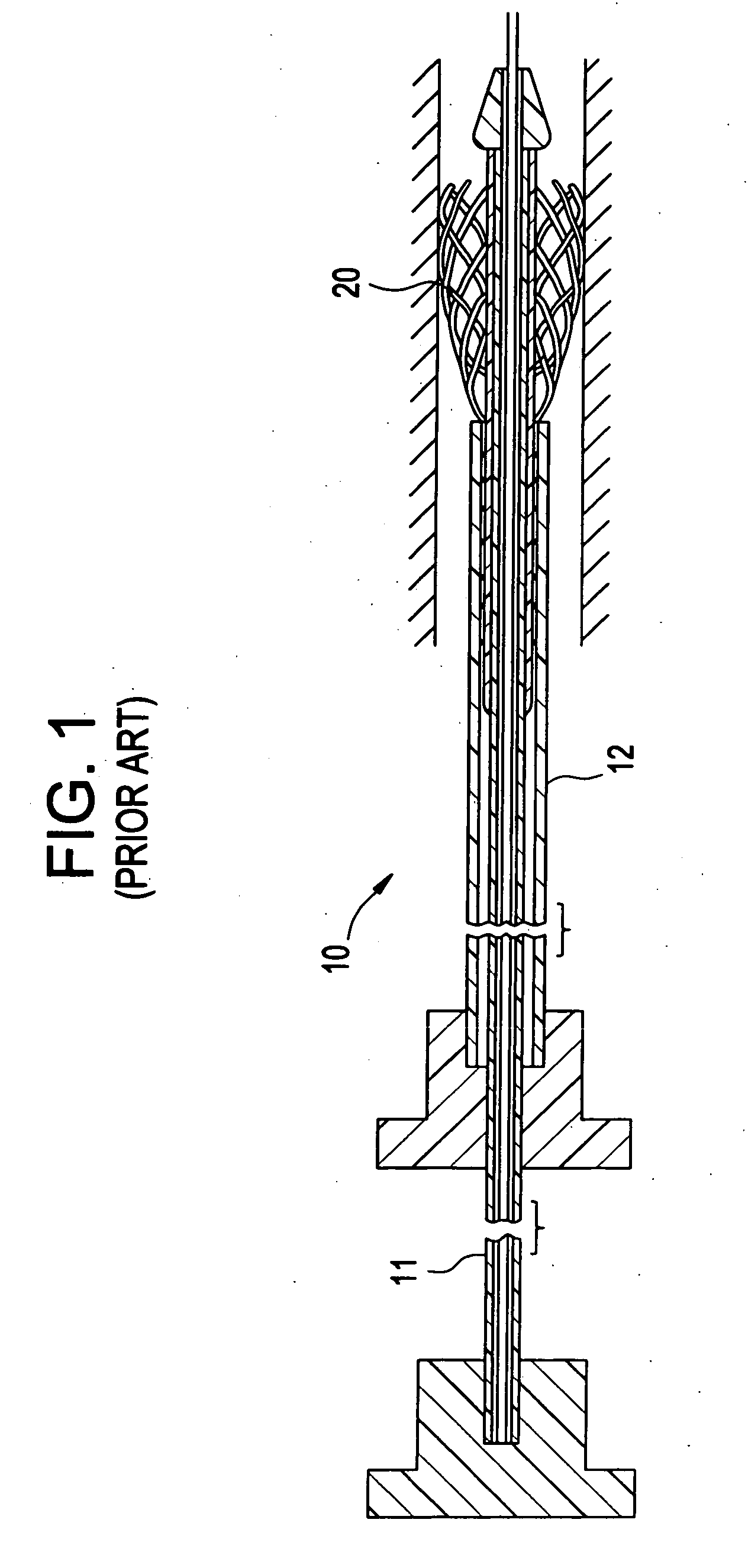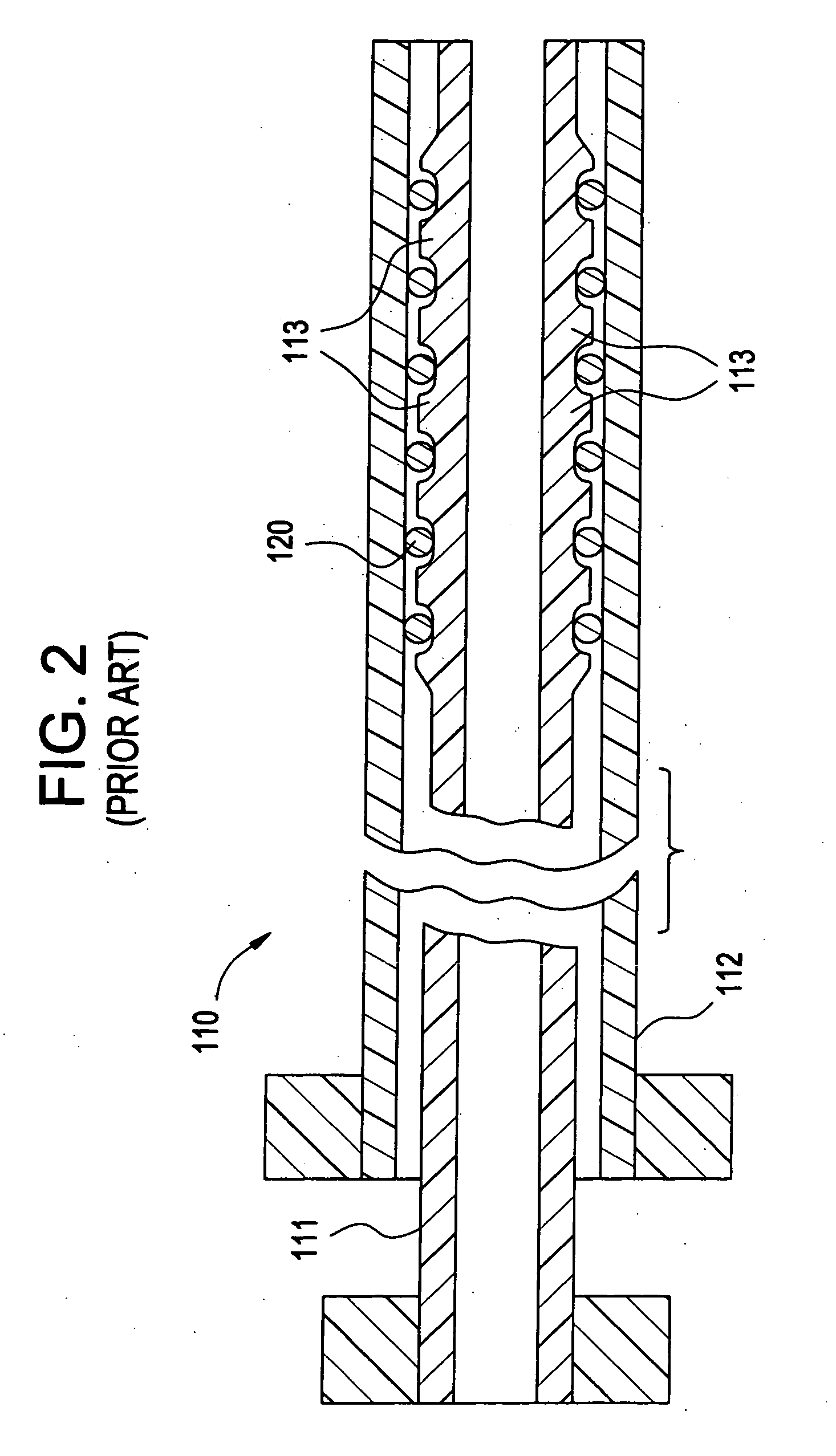Deployment system for an intraluminal medical device
a deployment system and medical device technology, applied in the field of deployment systems for intraluminal medical devices, can solve the problems of insufficient radial strength, risk of unraveling of some of the fibers comprising the braided stent, and the impracticality of using balloon expandable stents in some vessels, so as to prolong the shelf life of the intraluminal medical device, enhance the visualization of the stent, and minimize undesirable or premature delamination
- Summary
- Abstract
- Description
- Claims
- Application Information
AI Technical Summary
Benefits of technology
Problems solved by technology
Method used
Image
Examples
Embodiment Construction
[0028]FIG. 1 illustrates a conventional catheter delivery system 10 for delivering a stent 10 into a patient's vasculature, such as into the coronary artery, the carotid artery, the renal artery, peripheral arteries or veins, and the like. As shown in FIG. 1, a self-expanding stent 20 having an open lattice structure is inserted between an inner member 11 and an outer member 12 at a distal end of the catheter delivery system 10. The stent 20 is self-expandable such that the stent 20 expands as the inner member 11 on which the stent is mounted moves beyond the outer member 12. Because the stent 20 is not secured to the inner member 11 prior to delivery, other than by the overlying outer member 12, expansion of the stent occurs rapidly as the stent 20 emerges from the catheter delivery system 10.
[0029]FIG. 2 illustrates a prior art catheter delivery system 110 that is similar to that described above with respect to FIG. 1, except that a distal end of the inner member 111 is made from...
PUM
 Login to View More
Login to View More Abstract
Description
Claims
Application Information
 Login to View More
Login to View More - R&D
- Intellectual Property
- Life Sciences
- Materials
- Tech Scout
- Unparalleled Data Quality
- Higher Quality Content
- 60% Fewer Hallucinations
Browse by: Latest US Patents, China's latest patents, Technical Efficacy Thesaurus, Application Domain, Technology Topic, Popular Technical Reports.
© 2025 PatSnap. All rights reserved.Legal|Privacy policy|Modern Slavery Act Transparency Statement|Sitemap|About US| Contact US: help@patsnap.com



